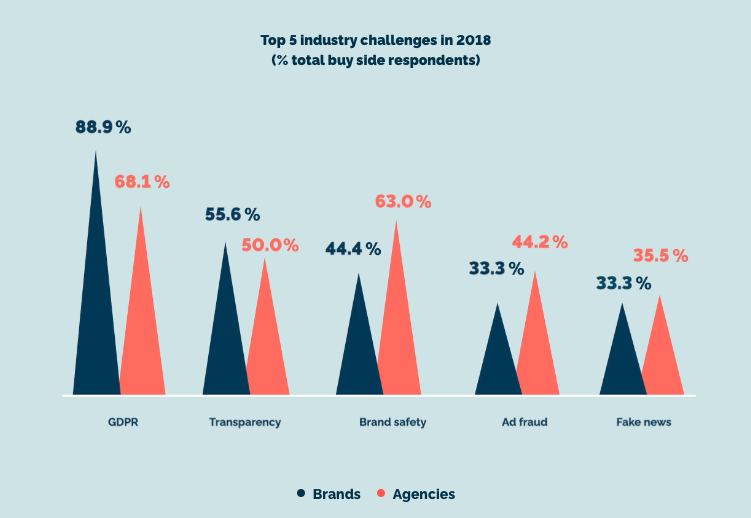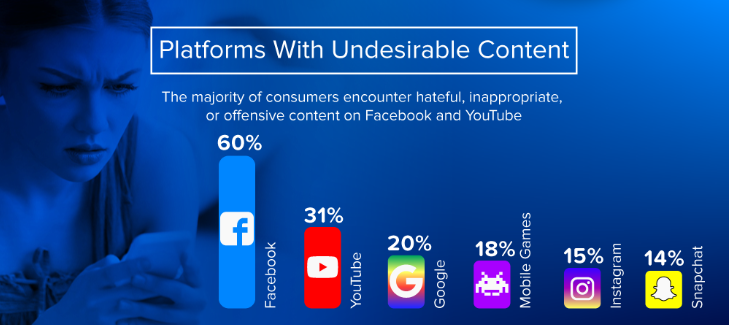When it comes to your online ads, brand safety is an increasingly important factor to consider. Consider the blow-up earlier this year as brands fled YouTube in the wake of explicit pedophilic content. This came after two major scandals in the past two years had brands pulling their ads from the platform.
AT&T pulled no punches, saying via email: “Until Google can protect our brand from offensive content of any kind, we are removing all advertising from YouTube.”
It was a very smart move, especially in light of research that shows consumers define “brand safety” more broadly than the industry expects.
“The most recent digital media brand safety survey, conducted by the Trustworthy Accountability Group (TAG) and Brand Safety Institute (BSI) of US consumers, highlights the significant financial risk to brands from a potential brand safety crisis involving their advertising,” writes Piet van Niekerk in FIPP. “Another survey, the AdColony Brand Safety Survey, was conducted globally, with the majority (57 percent) of respondents from North America, followed by Europe, Middle East and Africa. It found that Facebook (60% percent) and YouTube (31 percent) remain the top places where consumers are seeing non-brand-safe content in close proximity to brand advertising.
“The results of both these surveys echo the findings of an earlier survey conducted by Integral Ad Science (IAS) at the start of last year,” van Niekerk continues. “In this survey, 816 digital media leaders said brand safety, along with transparency and accurate measurements were the industry’s biggest challenges.”

Image source: Integral Ad Science
This idea of brand safety isn’t a new phenomenon, of course. In the early days of television, advertisers frequently pulled their ad spots in TV shows that featured content they felt was inconsistent with their brands. Same thing with radio; when shock jocks starting pulling in massive ratings, they lost many sponsors who felt the association to these DJs was bad for their brand.
Yet this negative association occurs with alarming frequency in digital advertising … and it costs brands dearly.
“According to the findings of the TAG and BSI survey, among potential topics of brand-unsafe content, consumers expressed the strongest concern about ads running near hate speech, pornographic content, violent content, and illegal drug-related content,” van Niekerk notes. And given the free-wheeling nature of online content, what looks like a safe place can quickly devolve into a branding nightmare, as the pedophilic comments scandal on YouTube showed all too well.
The consumers polled in the TAG/BSI study were clear:
*73% said brands should prevent their ads running near hate speech and pornography; 70% said the same about violent content; and 69% said advertisers should avoid illegal drug-related content.
* 90% said it was “very or somewhat important” for advertisers to make sure their ads don’t appear near dangerous, offensive, or inappropriate content.
Interestingly, consumers hold the brands and their ad agencies about equally responsible for where their ads appear – over the site owner and the technology provider.
“When asked who should be responsible for ensuring ads do not run with dangerous, offensive, or inappropriate content, respondents assigned responsibility broadly, with 70 per cent naming the advertiser, 68 per cent the ad agency, 61 per cent the website owner, and 46 per cent the technology provider,” van Niekerk notes.
And the largest offending platform? Facebook, by a wide margin: Their brand safety guidelines have been notoriously inadequate.

Image source: Ad Colony report
The reality is brands have no way of knowing with 100% confidence that their online ads will not be associated with this kind of highly damaging content. All it takes is one misplaced video or one rogue commenter on a thread to cause consumers to think poorly of the brand whose bad luck it is to be seen next to it.
It’s the danger of digital ads that is too often overlooked … until it blows up in a massive way like the recent scandals. It makes print look even better by comparison.
